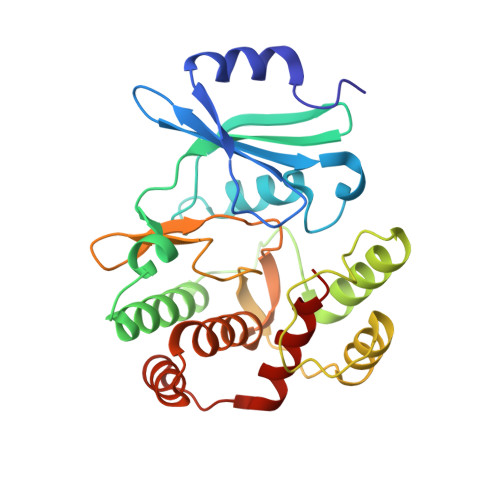Substrate promiscuity of an aminoglycoside antibiotic resistance enzyme via target mimicry.
Fong, D.H., Berghuis, A.M.(2002) EMBO J 21: 2323-2331
- PubMed: 12006485
- DOI: https://doi.org/10.1093/emboj/21.10.2323
- Primary Citation of Related Structures:
1L8T, 2B0Q - PubMed Abstract:
The misuse of antibiotics has selected for bacteria that have evolved mechanisms for evading the effects of these drugs. For aminoglycosides, a group of clinically important bactericidal antibiotics that target the A-site of the 16S ribosomal RNA, the most common mode of resistance is enzyme-catalyzed chemical modification of the drug. While aminoglycosides are structurally diverse, a single enzyme can confer resistance to many of these antibiotics. For example, the aminoglycoside kinase APH(3')-IIIa, produced by pathogenic Gram-positive bacteria such as enterococci and staphylococci, is capable of detoxifying at least 10 distinct aminoglycosides. Here we describe the crystal structures of APH(3')-IIIa in complex with ADP and kanamycin A or neomycin B. These structures reveal that the basis for this enzyme's substrate promiscuity is the presence of two alternative subsites in the antibiotic binding pocket. Furthermore, comparison between the A-site of the bacterial ribosome and APH(3')-IIIa shows that mimicry is the second major factor in dictating the substrate spectrum of APH(3')-IIIa. These results suggest a potential strategy for drug design aimed at circumventing antibiotic resistance.
- Department of Biochemistry, McGill University, 3775 University Street, Montreal, Quebec H3A 2B4, Canada.
Organizational Affiliation:



















